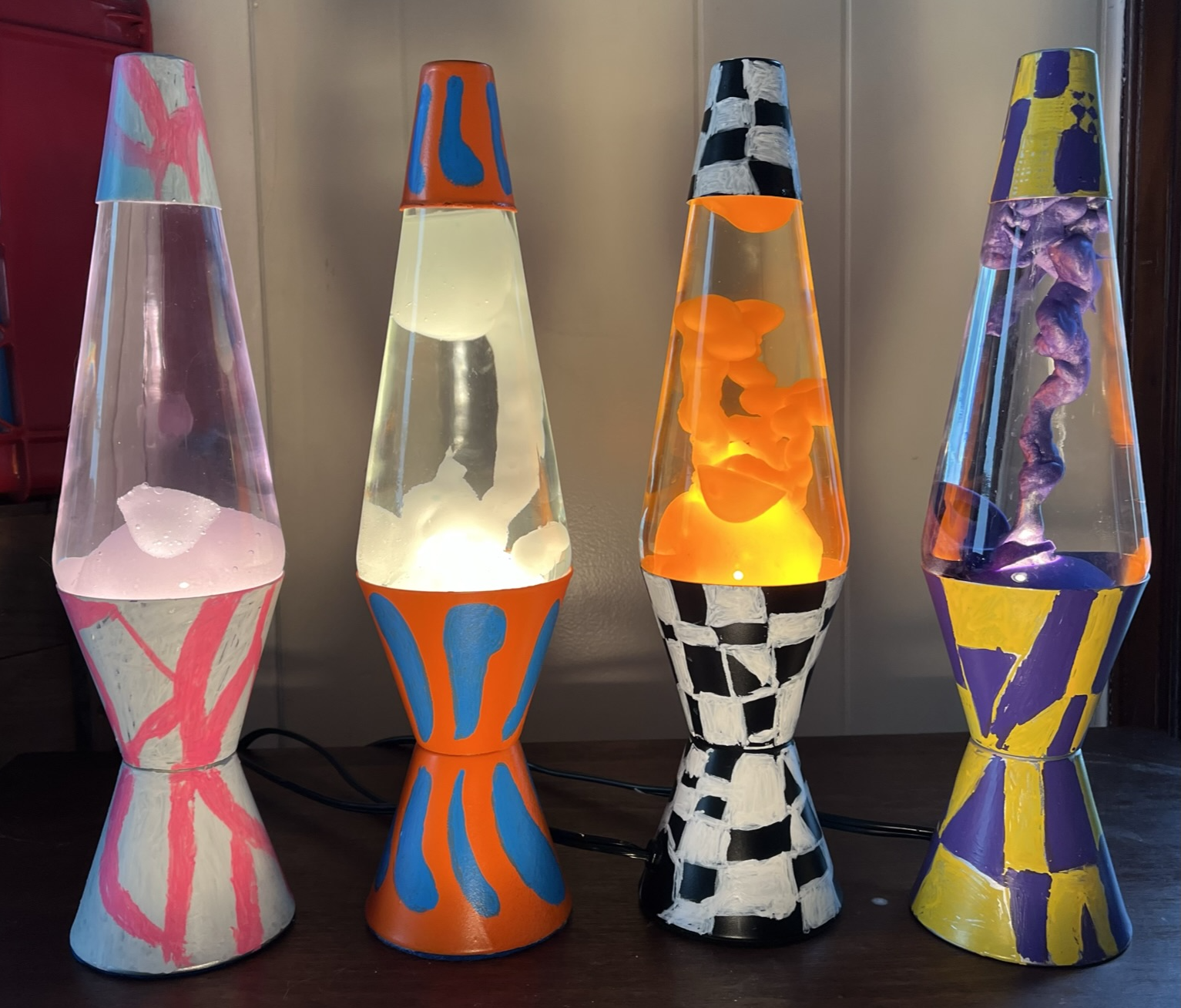Photograph courtesy of the author.
In an office-building lobby in San Francisco, there is a wall where about one hundred lava lamps simultaneously flow. They are not just decorating the wall; they are helping to encrypt the internet.
The lava wall is owned by a software company called Cloudflare. A camera photographs the lava lamps, whose patterns are constantly shifting. Each image is then digitized and stored as a series of numbers. This analog process produces sequences that, in their organic variance, are more unpredictable than anything a computer could generate on its own. With the help of its lava lamps, Cloudflare encrypts at least 10 percent of global web traffic.
As the owner of fifty lava lamps, I felt validated when I found out about Cloudflare’s wall. I bought all the lamps within a six-month span I now refer to as my “lava period.” It started when I broke my lava lamp of eight years by leaving it on for two weeks. The lamp had survived the dumpster I found it in, and two cross-country moves, but it couldn’t endure its own heat. Many things went wrong at once: the wax (the “lava,” the substance that moves) started sticking to the glass, the liquid lost its color, and the spring that sat at the base of the globe broke into pieces. Little bits of metal bobbed at the surface, as though drowning and reaching up for help.
Bereft, I went on the internet, where I quickly learned that we were in the midst of a lava lamp shortage. It was 2022 and Schylling, the leading U.S. manufacturer of lava lamps, had temporarily shut down the LAVA® online store, citing supply chain issues. I turned to eBay, where price gouging meant that most of the available lava lamps were going for hundreds of dollars. In a panic, I made lowball offers on the only three listed for under thirty. I didn’t expect to, but I won them all.
After that, I couldn’t stop. I ordered a lava lamp shaped like a crayon, a lava lamp from 1971 still in its box, a lava lamp embedded in a six-foot-tall standing lamp. I was always looking for good deals. Once, I met a woman in a gas station parking lot off the interstate to buy a vintage glitter lamp for ten dollars.
My partner wanted me to stop buying lava lamps. It was an expensive hobby, and we were running out of room in our apartment. But like the web encryptors at Cloudflare, I cared about the differences between each lava lamp: the way some produce slow, luminous pillars while others look like bottled weather. Governed by heat and by fluid dynamics, no lamp will flow the same way twice. Every detail matters: the temperature of the room, the balance of chemicals and wax. Despite its simple design, a lava lamp’s contents are as permutable as an alphabet. Together, a group of lamps felt like a series of symbols written in wax that I could never quite read: blue column, crimson circle, yellow ribbon. I kept buying lava lamps because I wanted to build a kind of language with them.
I started using the lamps as a teaching tool, showing them to high school students as a way to talk about form and content in poetry. The form was the lamp’s external shape: the silver base like an hourglass, the bottle resting atop it. The content was everything in the lamp that could move: the water, the chemicals, the wax. A student once asked how the heat from the light bulb that made the lamp function would be categorized: Form, or content? I didn’t have a good answer—it felt like a secret third thing.
The lava lamp’s origins are the stuff of internet folklore. The story goes that the first one ever made was intended to serve as an egg timer. Modeled after an hourglass, it was filled with oil and water that would separate with heat. If sand in a bottle could measure time, the inventor Donald Dunnet had asked, why not liquid? In 1963, a nudist experimental filmmaker named Edward Craven Walker began selling what we now know as the lava lamp. He had been inspired by seeing one of Dunnet’s egg timers in a pub. The lava lamp was originally marketed as a high-end decoration for sophisticates. Its rocket-like design, a reflection of the iconography of the space age, soon became emblematic of the psychedelic culture of the period. Walker used the money he made selling lava lamps to help fund his nudist resort.
Teaching over webcam in the glow of a lava lamp, I tell my students that poems—like jokes—hinge on surprise. Patterns established and then altered. A lava lamp, then, is a perfect poem. A liquid hourglass of light, it measures out time in stanzaic blobs. People need poems and lava lamps for the same reasons. We need light that feels familiar in all its shifting.
Nora Claire Miller is the author of the chapbook LULL. Their poem “Rumor” appears in our new Fall issue, no. 246.
